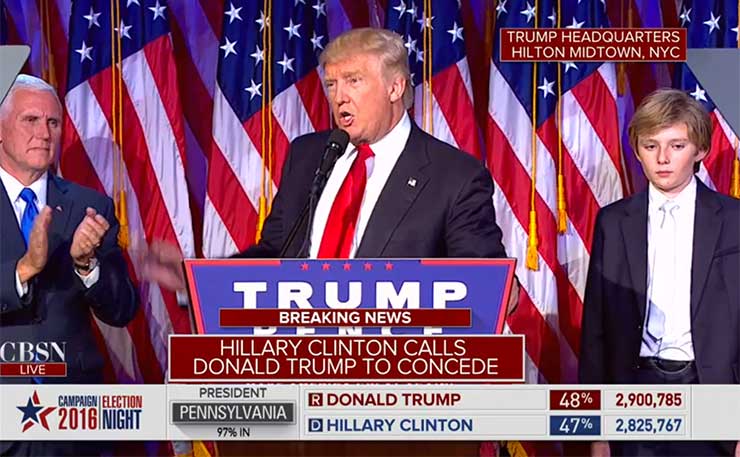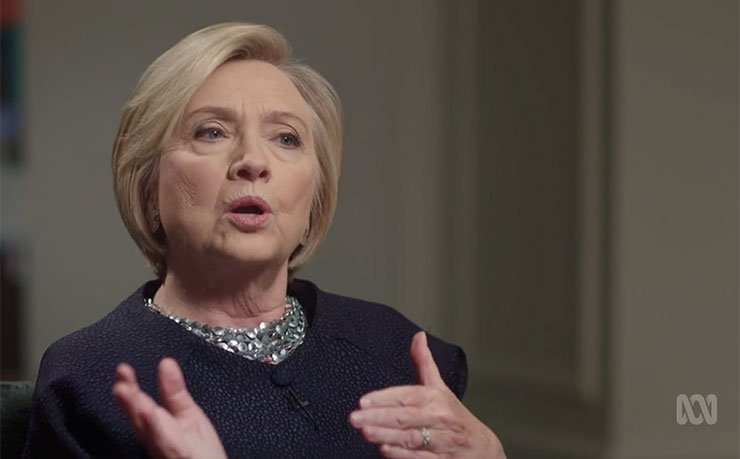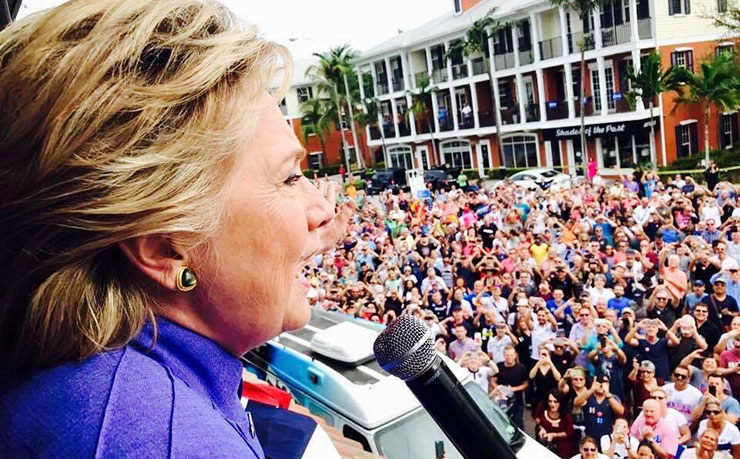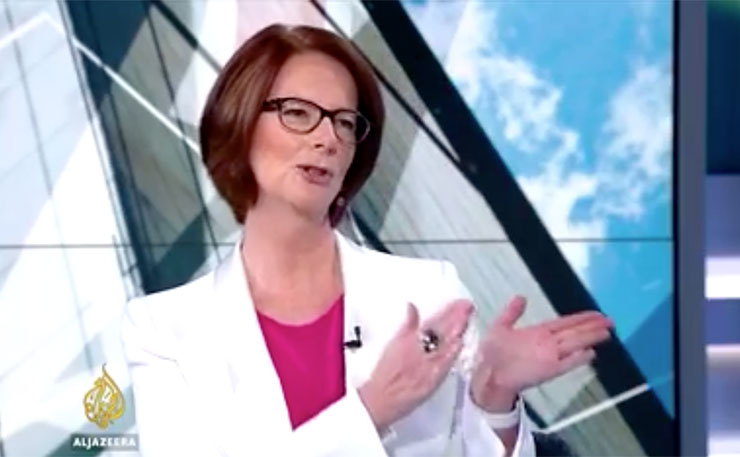In the second of a two part series, Michael Brull looks at the scandal that is wiping billions of dollars in value off the world’s richest company… and it’s about much more than just social media and data mining.
British news program on Channel 4 has exposed Cambridge Analytica and Facebook for what has become an international scandal. However, due to the size and complexity of the issues raised, I don’t think their significance or implications have received the analysis they warrant. In this two part series, I’m going to lay out what I think are the important elements of the story. In the first article, I showed why Cambridge Analytica itself is a big deal. In this story (part 2), I turn to why we should be worried about other Cambridge Analyticas which have not yet been exposed.
When it comes to political messaging, people usually expect lies, half-truths and distortions to come from political campaigns. They take those messages with a grain of salt. Social media feeds are often not treated with the same kind of scepticism. This is because not all messaging is explicitly labelled as coming from, or otherwise being coordinated with a politician or other type of vested interest.
Often, people will simply see a video from a page or account they aren’t familiar with. Sometimes it will be promoted as an advertisement, sometimes it will simply have gone viral and they’ll have seen it shared by a friend. They won’t have any idea of where the content actually originated.

Cambridge Analytica explicitly celebrated this feature of Facebook. As their leading figure put it in the secretly recorded video, “We just put information into the bloodstream of the internet and then watch it grow, give it a little push every now and again over time to watch it take shape.” Their content “infiltrates the online community, but with no branding, so it’s unattributable, untrackable.”
This is important:
“It has to happen without anyone thinking, ‘that’s propaganda,’ because the moment you think ‘that’s propaganda,’ the next question is, ‘who’s put that out?’”
The subterfuges aren’t detailed, but they are broadly outlined. They set up things like fake IDs, websites, students doing research projects, and so on. The messages they send are under different names, attached to different entities, totally removed from Cambridge Analytica.
After these layers of fake people and organisations, people on Facebook or Twitter don’t realise that a data company working for Trump (or whoever) has pushed this propaganda onto their social media. They’ve simply learned through whatever source that the head of UFC thinks Trump is great, or that Hillary Clinton was a big supporter of the Iraq invasion in 2003, or NAFTA.
In a sense, people tend to trust social media more than traditional media. Most people, in Australia and elsewhere, expect corporate media to purvey various forms of lies and propaganda, especially if it is contrary to their political values. On social media, people can be less likely to vet a story that affirms their beliefs or values.
Thus, the first aspect of Cambridge Analytica’s propaganda that deserves critique and institutionalised response is the aspect of covert propaganda. In Australian elections, campaign ads on TV must always feature the bit at the end about who approved it, and where they’re located.
It should be said, in and of itself, this is not entirely new, though it may have been scaled up. American media-watch group FAIR routinely documents failures to disclose interests of media commentators in discussion on current matters. For example, the Washington Post has glorified Amazon, without noting that it is owned by the guy who owns Amazon. Television networks didn’t disclose that dozens of supposed military analysts who appeared on their TV got talking points from the Pentagon, or their ties to military contractors.
In Australia, right-wing think tanks like the Centre for Independent Studies, or Institute for Public Affairs refuse to disclose their funders. Thus, relevant conflicts of interests are not disclosed. Whilst this is a serious emerging problem for social media, it is a problem that is customary in other media too. It is significant because of the greater trust people have towards content on social media, but these kinds of scandals will presumably create a backlash and increased skepticism on those platforms.
Emotions, not facts
Several years ago, Princeton philosopher Harry Frankfurt wrote a short book, On Bullshit. Trying to understand what bullshit is, he argued that it can be distinguished from mere lying. If someone asks me if I have been to the dentist in the last week, I could lie and say yes. If I wanted to bullshit my questioner, I might go into an irrelevant diatribe about dentists, or people who ask such questions, or otherwise offer a slew of confusing jargon to avoid answering the question.
Whatever the means, I can do this without ever committing to a yes or a no. In this sense, whilst lying pays a tribute to the truth by denying it, bullshitting is in an entirely different category, where truth and falsity are irrelevant.
This is basically the approach of Cambridge Analytica. They candidly explained that, “It’s no good fighting an election campaign on the facts, because actually it’s all about emotion.” In a way, this is understandable. Things that are true or false can be analysed, critiqued, even proven wrong. Other things, like feelings, or vague smears, can make an impression. As they explained, “These are things that, I mean, it sounds a dreadful thing to say, but these are things that don’t necessarily need to be true, as long as they’re believed”.
The most important thing is that emotions are manipulated. “You didn’t know that was a fear until you saw something that just evoked that reaction from you. And our job is to get, is to drop the bucket further down the well than anybody else, to understand what are those really, deep-seated underlying fears, concerns.”

In a sense, the Trump campaign, from the continuous and constant Facebook feedback, learned to work on those fears, and hammer their concerns, in increasingly effective messaging. Trump’s final ad, aside from the subtle anti-Semitic overtones and reference to illegal immigration, was more or less a leftist sounding ad that could appeal to an incredibly broad audience and speak to wide-ranging concerns.
In a way, this is how propaganda tends to work. In his essay, “The Prevention of Literature”, George Orwell noted that the challenge for totalitarian governments is that facts are stubborn: “no-one is infallible”, and some facts won’t serve a government’s interests. That is, actual facts are a difficulty for propaganda.
One solution is “outright falsification”, where lies are told about the past. In the long run, totalitarianism “probably demands a disbelief in the very existence of objective truth.” The point isn’t that Trump is totalitarian, but that objective truth and facts are an obstacle to propaganda.
Operating in the realm of truth and empirical claim can pose difficulties. After all, those are things that can be debated and analysed. It is more effective and simpler to manipulate people’s emotions. In a sense, this is a commonplace of most propaganda, and is a constant feature of demagogues and manipulative appeals.
For example, in 2010, University of California, Berkeley had a debate about whether the university should divest from Israel. Some leaflets featuring anti-BDS talking points were found laying around. They similarly urged speakers to be emotional, and avoid discussion of the facts. For example, under “DO include in your speech”, they advised:
“Make it personal, include personal experiences and emphasize feelings of personal attack.
BE EMOTIONAL. Don’t be afraid to show how you feel (angry, sad, etc.)…”
Under “DO NOT include in your speech”, the leaflet advised:
“DON’T try to deconstruct the bill. DON’T focus on addressing the fallacies/specifics of the bill.
Instead, focus on how it is an attack on the Jewish community.
AVOID a debate on the Middle East. Supporters of the bill would like to argue on this platform.”
Not all propagandists have their tactics leaked. Yet I imagine many of them give similar advice to the pro-Israel groups. Like Cambridge Analytica said, “It’s no good fighting an election campaign on the facts”.
How many Cambridge Analyticas are there?
The reason we know about Cambridge Analytica is because of some British investigative reporters posing as Sri Lankans hoping to recruit them for a campaign. That is, our information about what other organisations like Cambridge Analytica do is fragmentary. We don’t know if the Clinton campaign acted similarly. We don’t know how they affected campaigning in Australia. We don’t know if they harvested data on Australians, or sold that data to Australian politicians, or their electoral campaigns.
It should be noted that data is increasingly central to political campaigning. Clinton’s campaign manager was reportedly obsessed with data, which they used to determine all political decisions. In September 2016 – as Trump campaign manager Steve Bannon was reversing the tide, and winning the election – the Clinton campaign was confident their data analytics were what would give them the edge.
A puff piece on the campaign in Politico explained that “with Donald Trump investing virtually nothing in data analytics during the primary and little since, [director of data analytics Elan]Kriegel’s work isn’t just powering Clinton’s campaign, it is providing her a crucial tactical advantage in the campaign’s final stretch. It’s one of the reasons her team is confident that, even if the race tightens as November approaches, they hold a distinctive edge”.

Clinton’s campaign manager Robby Mook “spoke glowingly of Kriegel and expansively of his influence.” Mook declared: “His hand has guided almost every aspect of what we do”.
It is not clear why Kriegel’s data analytics were inferior to Cambridge Analytica’s. It’s possible that the latter had the edge due to its illicitly obtained data on 50 million Americans. It is possible the Clinton campaign was too inept to capitalise on its superior data team. Regardless, the fact that the Trump campaign used data-driven social media campaigning doesn’t mean they are an anomaly. It is likely that campaigns around the world use similar techniques.
However, while-ever our information about how political campaigns use social media remains fragmentary, we cannot know the extent to which our feeds are being manipulated. But there is some suggestive evidence that campaigns are directly or indirectly coordinating trolls to support their campaigns, and to suppress critics.
The troll armies of Clinton and Gillard
In May 2016, news broke that David Brock’s pro-Hillary Clinton Super PAC, Correct the Record, was coordinating large-scale social media trolling of critics of Clinton. Correct the Record was “arming them with instructions, talking points and postable infographics”. They had reportedly already at this time – during the Democratic Primaries – confronted some 5,000 critics of Clinton on Twitter, who would have overwhelmingly been supporters of Bernie Sanders.
The Clinton campaign admitted that Sanders’ popularity would have made it unpopular to criticise him directly. Thus, her operatives and campaigners instead targeted his supporters. This is more or less where the canard about the dreaded ‘Bernie Bro’ came from, despite surveys and data analysis showing the allegedly pervasive ‘sexist white male’ supporter of Bernie was a propaganda invention.
Just as the trolling wasn’t openly declared or admitted, neither was its coordination with the Clinton campaign. What we know about it depends on people conducting small research projects. Take the case of Sally Albright. Sally’s Twitter is followed by some 45,000 people. She calls herself a communications strategist, and worked as National Press Advance for Hillary Clinton for President in 2007-8. She hasn’t declared any work for the last Clinton campaign.
Sally’s Twitter is obsessively pro-Clinton and anti-Bernie. Full of incredibly dumb takedowns of Bernie. Like “Bernie ‘inspired’ his flock to value the viewpoint of 70k rust belt white men over the Obama coalition, 66 million strong, who voted for Democrats”. Like claiming advocates of free university tuition are engaged in a form of racism. Those ridiculous positions are wildly retweeted.
Why are Sally’s tweets so popular? And why are her replies to obscure tweeters – which are usually invisible to most people on twitter – so popular too? Because her pro-Clinton, anti-Bernie messages are endlessly amplified by fake accounts. In an incredible exposé by twitter user @likingonline, they showed that Sally retweeted herself through 63 unique accounts an incredible 30,939 times. She also used this array of accounts to promote other people with broadly similar messaging about Clinton, Bernie and Trump. One can imagine the fun of getting into an argument with a person on twitter, only to find a bizarrely large audience applauding every stupid and absurd retort of your opponent, accusing you of sexism and racism, on grounds similar to those mentioned above.
A person operating on good faith might well wonder, “What am I doing wrong? Why do so many people think I’m being racist? I should surely be quiet for a while and try to figure out what I’ve done wrong and why I don’t get it.”

@likingonline also provided “circumstantial evidence that Sally’s sockpuppet army is either working with or adjacent to Shareblue” – a pro-Clinton website set up by David Brock, the guy who organised trolls for Correct the Record. Again, Sally did not disclose this. Looking at her Twitter, one would quickly gather that she is obsessively pro-Clinton. There was no way of knowing whether it was her job to push that message. Or that there is a small army of fake internet accounts which she secretly controls to push that message, either by herself or by a handful of other prominent pro-Clinton figures.
Thus, if you found yourself in an argument on social media, assuming good faith on behalf of a critic may well be stupid, and make you a sucker. That credulity can be taken advantage of by cynical employees and even fake accounts, all pushing not lies, but utter bullshit. If you notice social media becoming strangely combative and polarised, this may well be part of why that is happening. People who engage in good faith are silenced by the bullying, whilst the most combative are unphased by armies of bots and trolls.
In Australia, there is less evidence of how political campaigning has connected to social media, and nothing so far on Cambridge Analytica. So far as I know, the best evidence we have about it is in a story at ABC by Latika Bourke from 2013.
Labor Prime Minister Julia Gillard’s campaign was run by chief media adviser, John McTernan. She was leaked “Thousands of emails” showing McTernan “used a ‘Twitter army’ to attack Coalition figures, promoting the Labor-generated attacks to journalists as evidence of broader public opinion. The correspondence shows the ‘Twitter army’ was used with the aim to dominate Twitter with trends, memes and tweets favourable to Labor”.

For example, he wrote to a junior staffer about mobilising the Twitter army: “Abbott said his grandparents were proud to be working class. Is that his proof of being in touch? One for your army?” Other times they’d promote memes to “push on Twitter”. One was forwarded to a staffer, and “14 minutes later it was posted online by the Twitter user @hilarystyles or ‘Raw Hide’.” This wasn’t declared to be part of Gillard’s campaign. Like Cambridge Analytica said in the undercover video, they “just put information into the bloodstream” of the internet with “no branding”.
McTernan asked staff who had “hounded Grahame Morris” to follow it up by taking on comments by Liberal leader Tony Abbott. And when “Fairfax journalist Jonathan Swan published an article reporting the Coalition’s pledge to deliver ‘cheaper’ broadband, Mr McTernan wrote to his press secretaries ‘Can someone: A. Speak to him B. Smash him C. Direct him to twitter mockery D. Smash him.’”
Again, this is what we know, because of leaking. There is plenty that we don’t know. Recently, a friend wrote to me, noting that intense trolling has left them reluctant to criticise the murderous tyrant of Syria, Bashar al-Assad. I replied that it is likely that the debate has in part been poisoned by covert trolling, given we never really know when these campaigns are being run.
For example, we know that the British government is running a propaganda campaign on Syria, “funding media operations for some rebel fighting groups”, “boost[ing]the reputation” of the “moderate armed opposition” and so on. This campaign started after Prime Minister David Cameron “failed to persuade parliament to support military intervention” against the Assad government. The campaign produced, under the supervision of the Ministry of Defence, “videos, photos, military reports, radio broadcasts, print products and social media posts branded with the logos of fighting groups, and effectively running a press office for opposition fighters.”
Likewise, Saudi Arabia is spending millions of dollars on lobby and public relations firms in the US, and is running “the Twitter account for the Syrian Opposition Coalition”.
Suppose these PR companies know how to spend their money wisely. They would presumably reach similar conclusions to Kushner and Cambridge Analytica, and decide that social media is the best way to reach their audience. This is just one example. There are countless countries and large corporate interests which would want to influence debate in one way, and suppress critics as best they can.
For people bowing out of public debates on social media because they’re getting too toxic… who knows if there was a hidden hand involved, on one side, the other side, or both?
Conclusion
Increasingly, the public gets news from social media, rather than traditional media. We trust it more, because it mostly means getting news from friends, or at least people on the internet we have some kind of relationship with, with an associated level of trust.
Yet increasingly, these spaces are becoming dominated with countries, political operatives and large corporate and financial interests pushing certain types of messaging. Facebook steals our data, and uses it to gain enormous amounts of money. In turn, various companies and campaigns manipulate us.
It has been said that social media has a polarising effect. Yet this is the effect of propaganda campaigns. Rather than debate facts, our emotions are manipulated. Where that doesn’t work, the McTernans and Albrights of the world order that political dissenters be smashed. Social media is becoming more toxic. There are elements of polarisation inherent in the medium, particularly on Twitter.
However, as they have gotten monetised, and become effective mediums for advertisers, they have been hijacked. And because they are so rewarding for the wealthy and powerful, those social media platforms are unlikely to improve.
We aren’t the people who pay for these products. As long as enormous private corporations are run for profit, their constituency will be the rich and powerful. It shouldn’t be a surprise that that type of product wouldn’t be on our side.
We have no idea the extent of propaganda that is insidiously shoved down our throats every day. We have no idea how we are being lied to, bullshitted and manipulated. We have no idea where those lies and manipulation are even coming from.
That is what we should take from the Cambridge Analytica scandal. Whatever their bragging, we don’t even know the scale of the problem yet.
Donate To New Matilda
New Matilda is a small, independent media outlet. We survive through reader contributions, and never losing a lawsuit. If you got something from this article, giving something back helps us to continue speaking truth to power. Every little bit counts.




